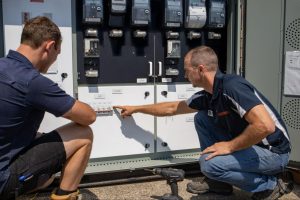You might be scratching your head wondering about the power capacity in your building? How do you really know if it is safe and enough for what you need?
Insufficient power capacity in older buildings is a common problem that can lead to a range of issues. When evaluating an older building for power capacity deficiencies, it’s essential to look for signs such as frequent electrical outages, circuit overloads, or dimming lights when multiple appliances are in use. Additionally, outdated electrical panels, wiring, and outlets may indicate the need for an upgrade. An assessment should consider the building’s current and anticipated power demands, taking into account modern technology usage, including electric heating and cooling systems, and the potential for electric vehicle charging. Addressing these power capacity shortcomings through electrical upgrades is crucial to ensure the building can safely and efficiently meet the needs of its occupants and adapt to the demands of contemporary living.

Increased power usage from modern technology, such as stoves, air conditioners, heaters, and electric vehicles, can have significant adverse effects on older buildings. Many of these structures were originally designed with electrical systems that are ill-equipped to handle the growing power requirements of today’s technology-driven lifestyles. As a result, residents in older buildings could experience frequent outages, which not only disrupt their daily lives but is also a safety concern. Upgrading the main supply, retrofitting older buildings with modern electrical infrastructure, and implementing energy-efficient solutions are necessary steps to ensure older buildings can adequately meet the rising demands of the modern world while maintaining safety and reliability.
Our team have been helping owners of older apartment buildings across Brisbane since 2008 – let us help guide you with data, information and options to help get the power capacity right for you. Call us today!


